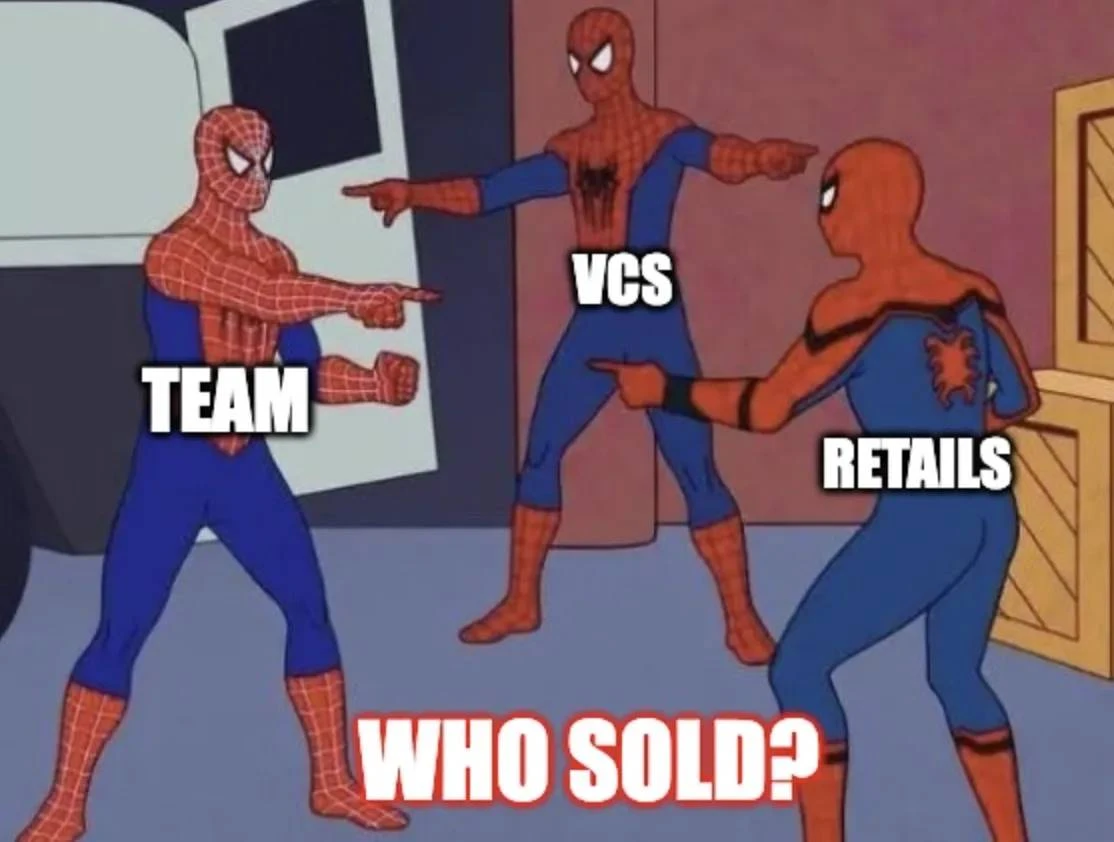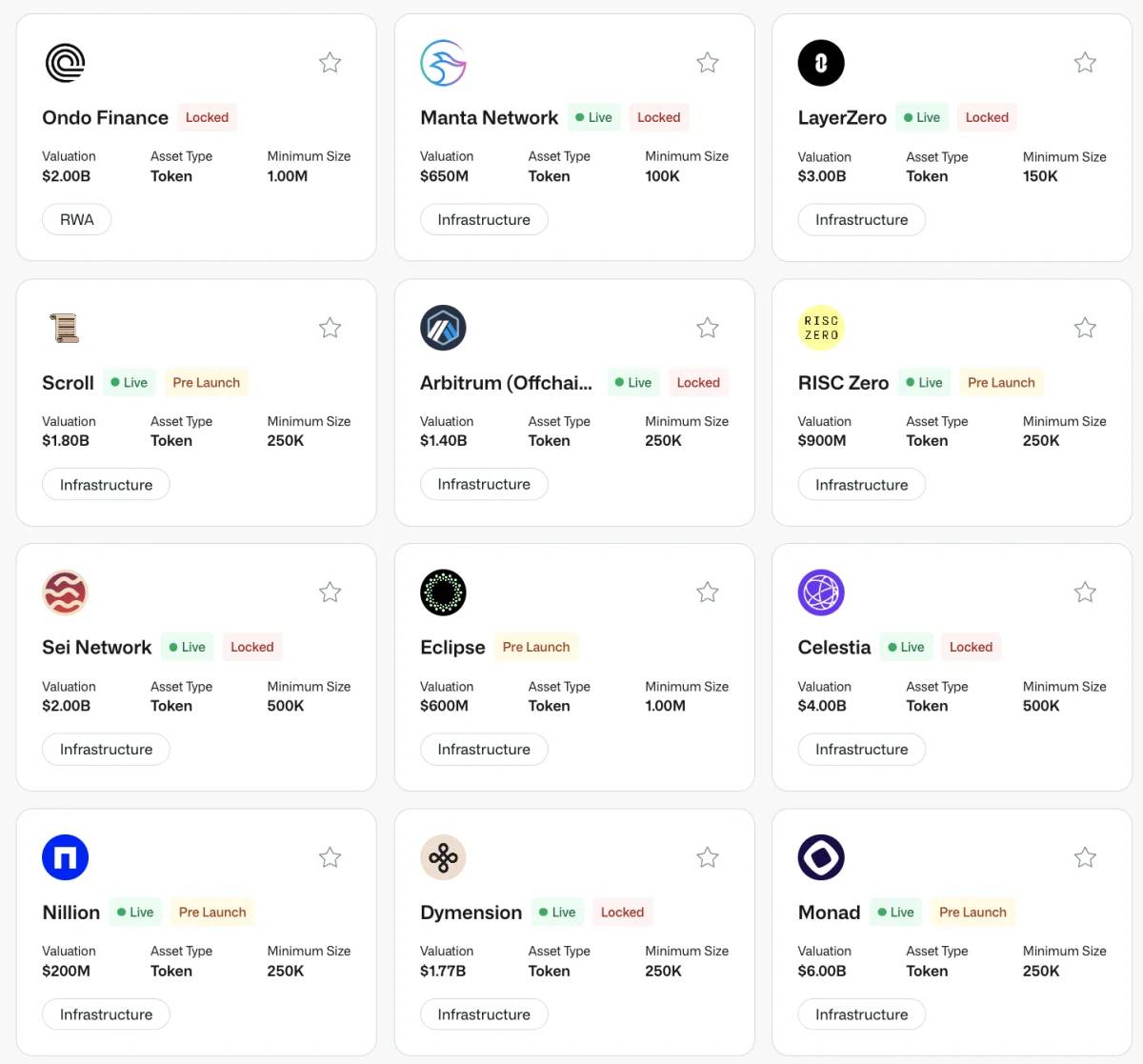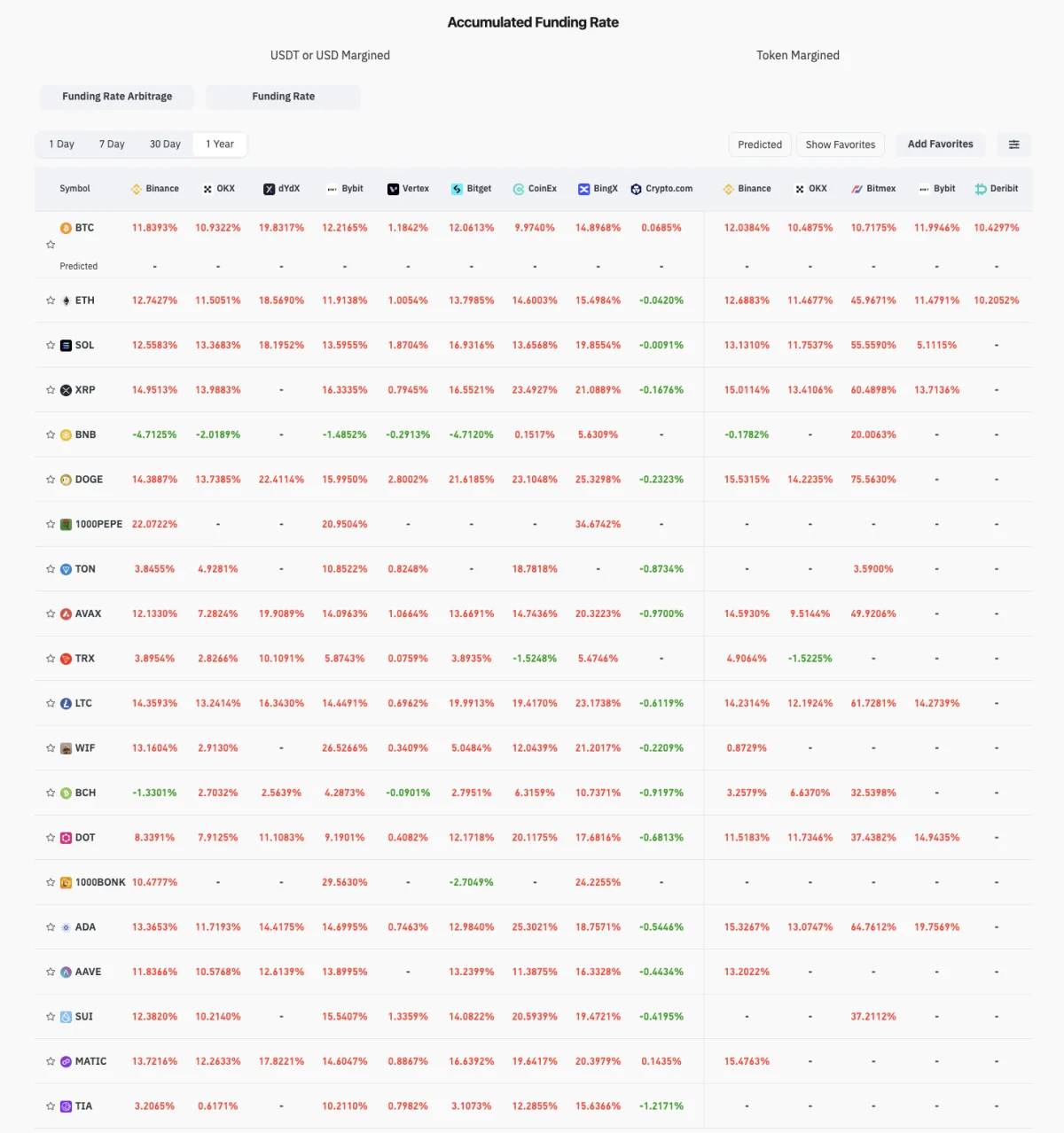Die Geheimnisse der sekundären OTC-Märkte für Kryptowährungen: Die Identität und Motivationen von Käufern und Verkäufern
Originalautor: Min Jung
Originalübersetzung: TechFlow
Zusammenfassung
-
The secondary OTC market is an area where people can buy and sell various assets, including locked tokens, equity or SAFTs (Shenchao Note: SAFT stands for Simple Agreement for Future Tokens. It is a legal agreement commonly used for financing blockchain and cryptocurrency projects. It allows investors to provide funds to the project team during the project development phase in exchange for future tokens.), which are difficult to trade on public exchanges. Today, the term secondary OTC market mainly refers to the trading of locked tokens.
-
The main sellers in the secondary OTC market include venture capital firms, crypto project teams and foundations, who are often driven by the motivation to secure early profits or manage selling pressure. Buyers can be divided into two categories: hodlers, who believe in the long-term potential of the token and are interested in the discount; and hedgers, who seek to profit from price differences through strategic financial operations.
-
As market sentiment becomes increasingly bearish, the secondary OTC market is gaining traction, with tokens often sold at deep discounts as buyer interest is limited. Nonetheless, the market plays a key role in managing liquidity and reducing immediate selling pressure on public exchanges, thereby contributing to a more stable and resilient crypto ecosystem.

Figure 1: Current market status, source: imgflip
Einführung
The secondary OTC market, while mostly inaccessible to most retail crypto investors, is rapidly gaining importance among industry insiders such as venture capital firms, crypto project teams, and foundations. As crypto market dynamics evolve, the secondary OTC market is becoming an important area for managing liquidity and securing profits, especially in an environment of high valuations and limited liquidity. Therefore, this report will discuss: 1) What the secondary OTC market is, 2) Who the participants are and their motivations, 3) Perspectives on the current state of the market, and 4) Insights from Taran, the founder of STIX, an OTC platform for private crypto trading.
What is the secondary OTC market?
The secondary OTC market (OTC) is a private trading space where buyers and sellers negotiate and trade directly between tokens, equity, or investment contracts such as SAFTs (Simple Agreement for Future Tokens), outside of public exchanges. Most assets listed on the secondary OTC market cannot be traded on regular exchanges such as Binance or OKX for various reasons. Since many crypto projects’ tokens are in a locked state, the secondary OTC market provides a way for investors and teams to sell these assets before they are tradable (unlocked). Today, the term “secondary OTC market” mainly refers to the trading of locked tokens, especially for TGE (Token Generation Event) or even pre-TGE projects. This article will focus on the trading of locked tokens for TGE projects.

Figure 2: Current state of the secondary OTC market, source: STIX
Why is it becoming an active market?
The main driver of the boom in secondary OTC markets is the strong incentive for stakeholders to sell their holdings. Currently, many of the top 20 tokens are trading at almost a 50% discount with a one-year lockup, while some tokens from projects outside the top 100 are trading at discounts of up to 70%. For example, a token priced at $1 on an exchange like Binance might only sell for $0.30 on a platform like STIX with a one-year lockup and an additional two years of monthly unlocking.
This trend is consistent with the recent market environment, characterized by high FDV (fully diluted valuation) and low liquidity, as well as negative sentiment towards venture capital firm tokens. As discussed in the article FDV is a MEME, a large number of new projects have emerged in the market, but there are no corresponding participants or liquidity to support such a large supply. Therefore, as more tokens are unlocked, the token price naturally falls. In addition, many tokens have limited contribution to the actual value of the market and are often overvalued relative to their actual user base and utility. Realizing this, the teams and venture capital firms that originally invested in these projects choose to sell now to lock in profits, rather than risk selling at a lower price in the future.

Figure 3: Current transactions in the market, source: Presto Research
Who are the buyers and sellers, and what are their motivations?
Sellers and their motivations
Team
Even with discounts as high as 50~70%, project teams often remain profitable. Many of these teams consist of small teams (usually 20-30 people) who have built projects in just 2-3 years. Despite relatively short development cycles and limited initial investments, the FDV of these projects is often assessed at $3 billion or more. Creating a company with a valuation of $1.5 billion with such a small team in such a short period of time is almost unheard of in the Web2 world. In this situation, many projects are tempted to choose to sell their tokens at a discount, realizing the opportunity to secure profits now rather than risk a possible decline in value in the future.
Venture Capital Firms
VCs face a similar situation. Recent market conditions have led to rapid and significant increases in valuations, with seed rounds often occurring just six months after the pre-seed round and at valuations three times greater. In some cases, VCs are even conducting multiple rounds simultaneously, offering different valuations for investments made at the same time. As a result, unless they invest in the latest stages before the TGE, many VCs still find themselves in a state of significant profitability even when accounting for the 50% discount in the secondary market. This environment has prompted VCs to sell in order to lock in their gains. Additionally, in the current market environment, limited partners (LPs) of VC funds have begun to pay more attention to the DPI (distribution of allocated capital) metric, which has further incentivized VCs to realize returns, reinforcing the trend of selling in the secondary OTC market.
foundation
Foundations may have slightly different motivations for participating in the secondary OTC markets. While some foundations may realize the high valuation of their tokens and seek a quick sale, others may take a more strategic approach. One common strategy is to sell unlocked tokens to investors at a discount, paired with a one-year lockup period. This approach reduces immediate selling pressure in the public markets while still allowing the foundation to raise necessary funds for operations. In many cases, this type of trading can be viewed as a more active or bullish use of the secondary OTC markets because it balances the need for operating funds with the goal of maintaining market stability.
Buyers and their motivations
Holder
In the secondary OTC market, the first category of buyers are those who are bullish on the long-term potential of the tokens. These people are often called “hodlers” who are committed to the success of the project and are willing to buy tokens at a 50% discount, intending to hold them for several years. For these buyers, the opportunity to buy tokens at a significant discount is extremely attractive because they plan to remain invested in the project for the long term, expecting the value of the tokens to rise as the project develops. The high discount rate provides them with a good entry opportunity, allowing them to accumulate more tokens at a lower cost.
Hedger
The second category of buyers are those who profit from this. These buyers are called hedgers, and they use perpetual swaps and other financial instruments to lock in profits from discounted tokens. By buying tokens at a 50% discount and shorting them, they can lock in a return equivalent to the discount. In addition, they can also earn funding fees if the funding fee is positive, further boosting their returns. This approach allows hedgers to take advantage of price differences between the secondary OTC market and the public market, which is a profitable strategy for those who are good at managing financial risk.
Why cant sellers be hedgers?
While it would be logical for sellers (such as VCs and project teams) to hedge their positions like buyers rather than sell at a huge discount, several factors make this approach impractical, such as regulatory hurdles and liquidity constraints.
In terms of regulatory challenges, VCs often face strict rules that restrict them from engaging in certain financial activities, such as shorting tokens — an essential component of an effective hedging strategy. In addition to these regulatory restrictions, hedging itself requires significant capital to avoid liquidation risk. Sellers need to post significant collateral, often exceeding the value of the tokens they are trying to hedge, because while the downside risk to the token price is limited, the upside potential is unlimited. This creates a situation where the financial requirements for hedging are prohibitively high, especially considering that most VCs and project teams have their wealth locked up in tokens, not in liquid cash. Furthermore, hedging is not as simple as it may seem. There are many complex factors to consider, such as counterparty risk — such as the potential risk of platform failure or bankruptcy (as seen with FTX) — and risks associated with funding fees, which can suddenly go negative, further complicating the strategy and potentially leading to unexpected losses.
Some thoughts
What do current market conditions mean?
Currently, secondary OTC markets are showing more bearish sentiment than public exchanges, with tokens struggling to find buyers even as they sell at discounts of up to 70%. This is in stark contrast to public exchanges, where investors are often compensated for shorting tokens through positive funding fees. While it is critical to understand the intentions of secondary market participants, this trend may reflect the caution of market insiders in responding to current conditions.

Figure 4: The 1-year cumulative funding rate for most tokens is positive. Source: Coinglass
The role of the secondary OTC market
Despite the bearish sentiment, it’s important to recognize that activity in the secondary market isn’t all negative. In fact, active secondary markets are critical to the health of the overall crypto ecosystem. By facilitating the transfer of tokens between sellers and buyers, secondary markets allow for profit taking outside of traditional trading venues. This process helps mitigate the impact of large Token entsperrt, which have historically been viewed as bearish events because they create greater selling pressure on the market. By enabling these trades to be completed over-the-counter, secondary markets reduce the immediate selling pressure on retail investors when tokens unlock. This change helps form a more stable and resilient market, where token unlocks no longer necessarily lead to sharp price drops, but instead support a healthier, more balanced market environment.
QA with Taran, Founder of STIX
Who are you and what is STIX?
Im Taran, the founder of STIX, an OTC platform for private crypto trading. It was founded in early 2023 to provide structured solutions for those looking to conduct secondary trading in the crypto space. Our main sellers are team members, early investors, and treasuries looking to sell concentrated locked token positions. Major buyers include whales, family offices, and hedge funds, among others.
How do you see the secondary OTC market evolving within the broader crypto ecosystem?
Recent pullbacks on emerging tokens suggest that these protocols surged in price in early 2024, largely due to their low circulation (demand outstripping supply). However, once the market turned risk-off in Q2, these tokens took a huge hit, with many falling by more than 75%. Many of these tokens experienced large-scale, ongoing unlocks, which were almost immediately sold off on the market, further impacting prices. Examples include Arbitrum, Starknet, Worldcoin, Wormhole, etc.
In Q1 and Q2, the same assets were traded in bulk in OTC exchanges, mainly by early investors to reduce risk and move to more liquid assets (such as BTC, ETH, etc.), with discounts ranging from 70-80% from the highs. Data shows that most tokens are at least 5x overvalued and further down after the introduction of new circulating supply.
Our drive for OTC price transparency in 2024 (see Hier ) draws attention to the importance of the OTC market. Buyers have multiple opportunities to purchase distressed positions, and sellers can trade OTC without causing market impact.
There is also a third party to these transactions: the project team. The team may decide to block OTC transactions for a number of reasons (see Hier ).
The importance of the secondary market lies in:
-
Remove motivated sellers from your capital table, preventing them from selling on the order book
-
Introducing new, motivated holders with a higher cost basis
-
Improving the average cost basis of private holders
-
Future supply control (introduction of new vesting periods, etc.)
-
Ensure there are no shady deals and have full visibility into OTC transactions
What are the main trends or topics in the secondary OTC market right now?
Two main trends:
-
For protocols that are not overfunded, treasuries are now looking to build cash reserves. We support multiple protocol treasuries to conduct structured OTC financings, where buyers purchase at favorable prices (unlocked in installments over a certain period of time) while the treasury increases its cash reserves. This allows treasuries to diversify, reduce risk, and ensure that teams have enough time to respond to competition.
-
There is a clear arbitrage opportunity for smart trading firms: buy at a favorable price over the counter and manage the hedge on the exchange, often with financing costs. This financing fee/off-exchange arbitrage is prevalent across hundreds of tokens and is a very profitable market neutral strategy for sophisticated trading firms.
Do you think the trend towards a buyer’s market will continue? What are your short-term and long-term views?
-
I don’t think funding fees/off-market arbitrage for most tokens will end soon, as they still have 2-3 years of unlocking period and funding fees for most tokens are positive.
-
Secondary markets are clearly cyclical: in 2023, the vast majority of OTC volume was for unlisted assets, mainly due to protocols that received a lot of venture capital but had not yet been launched. Now that most of these protocols are online, the market has shifted to trading locked token blocks, which are generally less risky because the spot/perpetual markets are mostly established and there is a lot of data to analyze.
-
Since there are ongoing unlocks every month, sellers also have the opportunity to continue risk management on exchanges and are not necessarily forced to trade over-the-counter. However, assets that are still on the unlock cliff (such as Ethena, Layerzero, IO.net, Aethir, etc.) still provide buyers with opportunities to find the best deals.
-
If the tokens go up in September and October, many sellers will contact STIX, looking to exit, as they have realized that it is always wise to reduce risk. Many sellers who did not want to trade OTC in Q1 now want to exit at a better price than they did in Q2/Q3. However, I do not think buyers are optimistic about these premiums, which is why I think the buyers market will continue until 2025.
This article is sourced from the internet: The Secrets of Crypto Secondary OTC Markets: The Identity and Motivations of Buyers and Sellers
Original | Odaily Planet Daily ( @OdailyChina ) Author | Asher ( @Asher_0210 ) WELL3, which was originally scheduled to issue tokens in the first quarter, finally announced that it would be listed on Bybit, Bitget and Gate.io at 18:00 yesterday. For the money-grabbing party, although the timing was not ideal and it failed to be listed on Binance as expected, at least some of the money-grabbing funds can be recovered, so when preparing to receive the token airdrop at 17:30 yesterday, there was still a little expectation. However, an unexpected event occurred. Although the opening time of the secondary market did not change, the time for collecting tokens was postponed from the original 17:30 to 17:45, and then to 20:00. In the end, it was still not possible to…







